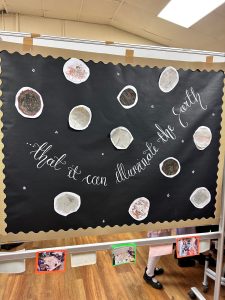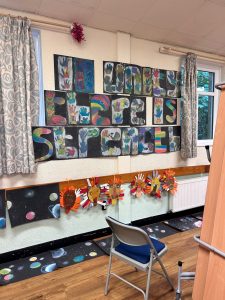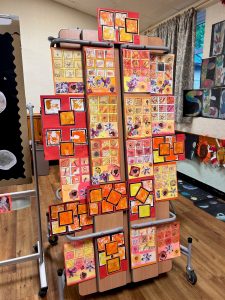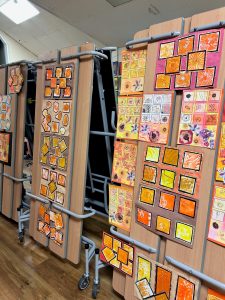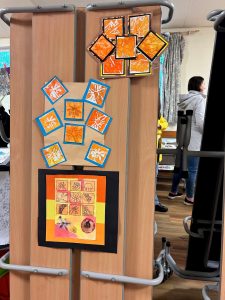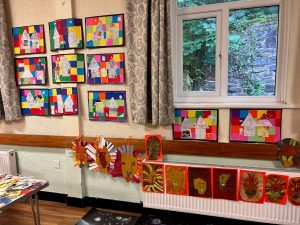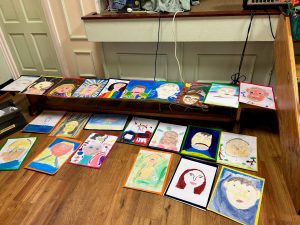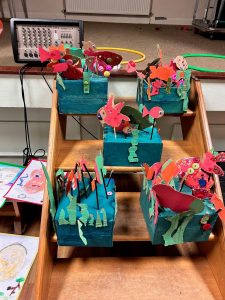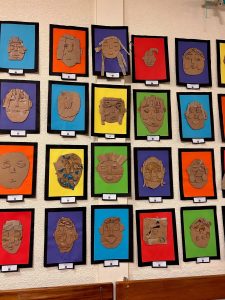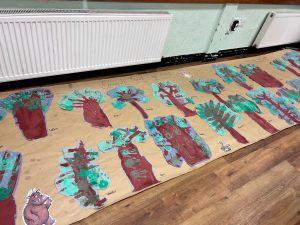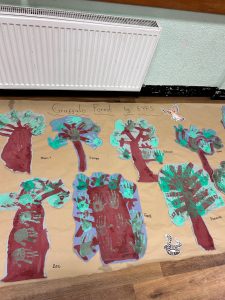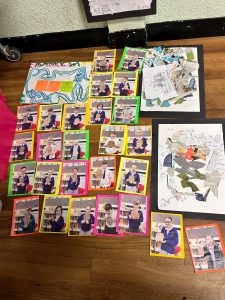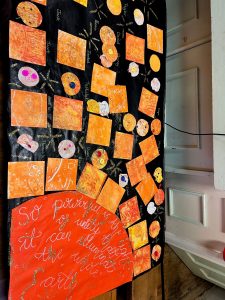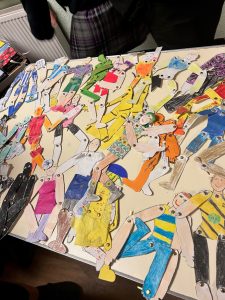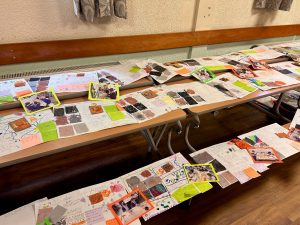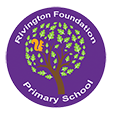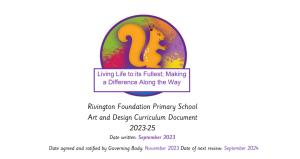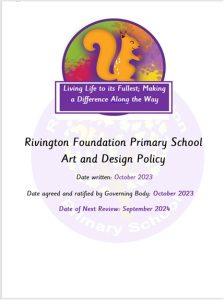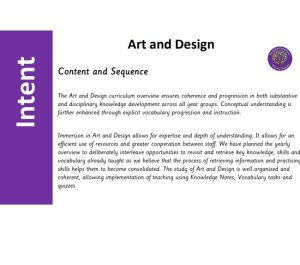
Art
Intention
At Rivington Foundation Primary School our vision statement is that ‘Living Life to its Fullest; Making a Difference along the Way’. This is carried throughout every area of the curriculum including Art and Design.
Students will encounter drawing, painting, printmaking, textiles, 3D and collage. Vertical progression in each discipline has been deliberately woven into the fabric of the curriculum so that pupils can revisit key disciplines throughout their primary journey with increasing degrees of challenge and complexity. Children will be exposed to art from different times and cultures, developing their knowledge of famous pieces of art and artists. Children will become confident and proficient artists, making choices about which media to work in.
Why is Art important?
“There are two distinct languages. There is the verbal, which separates people… and there is the visual that is understood by everybody.” Yaacov Agam
“Don’t worry about mistakes. Making things out of mistakes, that’s creativity.” – Peter Max.
“My goal as an artist is to create art that makes people look at the world in a different way.” Autumn de Forest.
Art offers all students the chance to express themselves and to develop creativity, challenging thinking. It allows communication without any language barriers and encourages respect and resilience.
Aims (from the national curriculum 2014):
Using the national curriculum for Art & Design, we aim to ensure that all pupils:
-
produce creative work, exploring their ideas and recording their experiences
-
become proficient in drawing, painting, sculpture and other art, craft and design techniques
-
evaluate and analyse creative works using the language of art, craft and design
-
know about great artists, craft makers and designers, and understand the historical and cultural development of their art forms
Scope of Art & Design
We believe that art and design is an essential part of our broad and balanced curriculum. ‘The arts provide space for personal judgement; help problem-posing and thinking outside the box; promote diversity, respect and intercultural understanding; show that making mistakes can be liberating and open up new learning opportunities; encourage looking at details and thinking in depth; provide therapeutic benefits and support emotional literacy and make us feel alive.’(CPR trust, 2016)
We teach children the skills and techniques they need to master elements of art. We encourage them to pursue a creative process and create for a purpose. We show them how art is used in the world and push them to engage with varied works of art, to pass comment and develop an understanding of how art reflects and shapes the world’s history and culture.
Implementation
The teaching and implementation of the Art and Design Curriculum at Rivington Foundation Primary School is based on the National Curriculum. It is supported by the CUSP Art and Design scheme of work. All children have the opportunity to learn art skills and techniques through this creative and exciting art curriculum. We have mixed aged classes and follow a 2-year long-term curriculum plan.
The CUSP Art curriculum is organised into blocks with each block covering a particular set of artistic disciplines, including drawing, painting, printmaking, textiles, 3D and collage. Vertical progression in each discipline has been deliberately woven into the fabric of the curriculum so that pupils can revisit key disciplines throughout their Primary journey at increasing degrees of challenge and complexity. In addition to the core knowledge required to be successful within each discipline, the curriculum outlines key aspects of artistic development in the Working Artistically section. Each module will focus on developing different aspects of these competencies. This will support teachers in understanding pupils’ development as artists more broadly, as well as how successfully they are acquiring the taught knowledge and skills.
Impact
We consider accurate and focused assessment as the cornerstone of high quality teaching. It allows learning to be planned and taught accurately as well as meeting the needs of the children and ensuring high levels of expectation and support.
The culture at Rivington Foundation Primary School is one of continually using what we know in order to move on children’s learning. This formative assessment happens all the time and may not necessarily be recorded. Teachers and other adults will use the information gathered through formative assessment to address gaps and to provide additional challenge for children as required and appropriate. This is most effective when done immediately and at the point of learning.
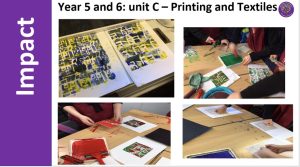
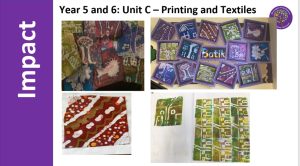
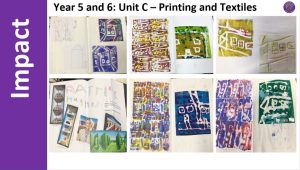
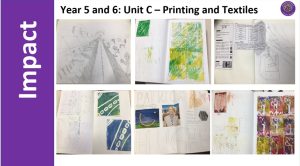
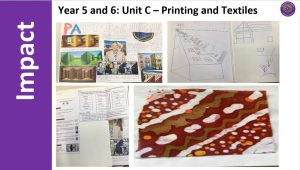
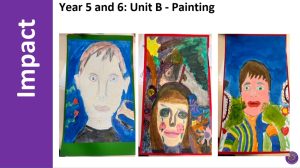

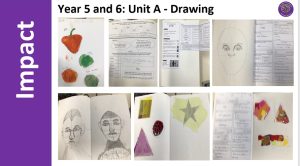
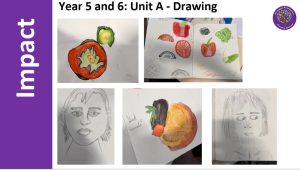
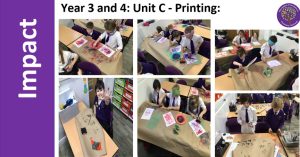
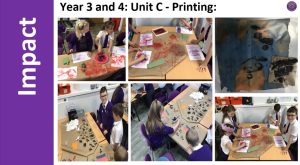

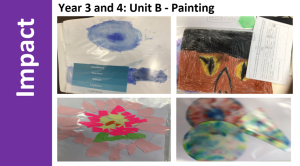
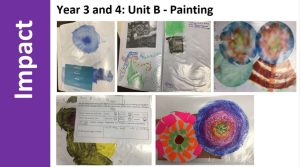
Successful Teaching, Learning and Assessment in Art and Design
-
Teachers and other staff have a secure understanding of the age group they are working with and have relevant subject knowledge that is detailed and communicated well to pupils.
-
Assessment information is used to plan appropriate teaching and learning strategies, including to identify pupils who are falling behind in their learning or who need additional support, enabling all pupils to make good progress and achieve well.
-
Work is differentiated, demanding and challenging enough for all pupils.
-
The contribution of Teaching Assistants has a significant positive impact on children’s progress.
-
Children demonstrate the characteristics of effective learning and positive learning behaviours.
-
Well-being and involvement in learning are high.
-
Progress over time is very good (in books and assessment information).
-
Achievement is high overall and ensures that the school meets government baseline standards.
-
High quality of work and presentation in books. There must be consistency in approach, expectation, standards, attainment and rates of progress.
2024-2025 Art and Design Curriculum Handbook
2024-2025 Art and Design Policy
Long-Term Plan for Art and Design – 2-year Rolling Programme
‘Art, craft and design embody some of the highest forms of human creativity. A high-quality art and design education should engage, inspire and challenge pupils, equipping them with the knowledge and skills to experiment, invent and create their own works of art, craft and design.’
Children are encouraged to express themselves creatively. They are provided with a wide variety of materials and are taught a range of different techniques. They are taught to be aware of shape, pattern, colour and design in two-dimensional and three-dimensional form. They learn about the work of different artists, both local, past and present and from a variety of different cultures.
A selection of photos from our art exhibition at the end of our Art Week 2023:
